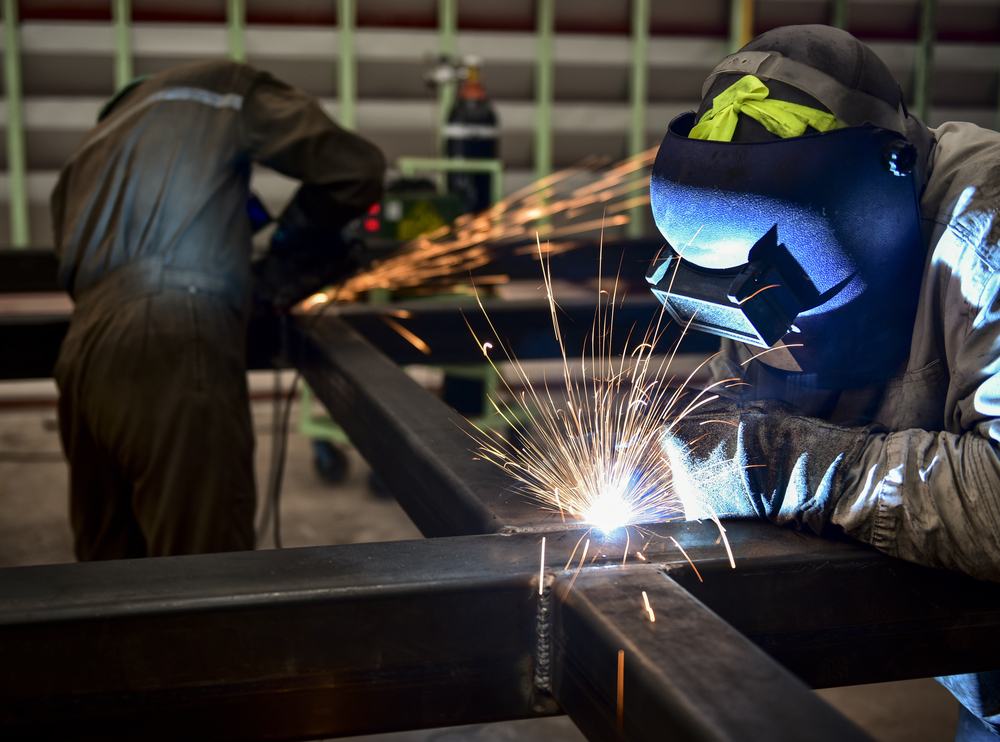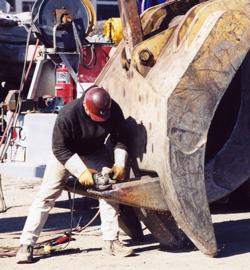Usual Welding Repair Service Issues and Just How to Address Them Efficiently
Welding repair services often encounter a variety of issues that can jeopardize the integrity of the final item. Typical issues consist of inadequate infiltration, porosity, and imbalance, to name a few. Each problem offers one-of-a-kind obstacles that need certain techniques for resolution. Recognizing these issues is necessary for welders aiming to improve their results and abilities. This discussion will check out these usual welding repair work issues and effective approaches to resolve them.
Inadequate Infiltration
Inadequate penetration happens when the weld metal stops working to fully fuse with the base material, causing weak joints and possible structural failures. This concern frequently stems from not enough warm input, wrong electrode angle, or inappropriate welding rate. Welders might come across poor penetration due to a mistake of the required criteria for a details material thickness or kind. In addition, contamination on the base product's surface area can hinder effective bonding, aggravating the trouble. To attend to insufficient penetration, welders should assure suitable settings on their devices and maintain a clean work surface area. Routine evaluation of welds is advised to recognize any kind of shortages early, permitting for timely modifications and the avoidance of endangered structural honesty in welded settings up.
Porosity
Porosity is a common flaw in bonded joints that materializes as small gas bubbles entraped within the weld metal. This defect can compromise the integrity of the weld, leading to reduced toughness and possible failing under tension. Belgrade Welding. Porosity normally arises from contamination, dampness, or improper welding methods, which permit gases to leave right into the molten weld swimming pool. To deal with porosity, welders ought to ensure appropriate surface area preparation, keep a tidy working environment, and use suitable welding parameters. Additionally, picking the appropriate filler product and protecting gas can reduce gas entrapment. Regular inspection and screening of welds can aid recognize porosity early, guaranteeing timely rehabilitative activities are taken, consequently maintaining the high quality and integrity of the bonded structure
Misalignment
Misalignment in welding can emerge from various factors, consisting of incorrect setup and thermal development. Recognizing the origin is crucial for efficient resolution. A number of correction strategies are available to straighten parts and ensure architectural honesty.
Reasons of Imbalance
Welding misalignment usually comes from a variety of underlying concerns that can endanger structural integrity. One main reason is incorrect fit-up of parts before welding, which can cause gaps and irregular surfaces. Variations in thermal expansion during the welding process can likewise result in distortion, specifically if the materials being signed up with have different coefficients of growth. In addition, inadequate fixturing and securing may fall short to hold components securely in position, resulting in movement during welding. Poorly conserved devices, including welding makers and devices, may present inconsistencies in the weld bead, additional adding to imbalance. Operator error, stemming from not enough training or experience, can also play a considerable role in producing misaligned welds.

Modification Strategies Offered
Resolving imbalance effectively calls for a mix of restorative methods customized to the certain problems handy. One typical technique is using components or jigs to hold parts in the right position throughout welding, ensuring consistent placement. Furthermore, pre-heating the materials can assist decrease distortion and enhance fit-up. For substantial imbalance, mechanical realignment methods, such as utilizing hydraulic jacks or clamps, can be employed to fix the position before welding. Post-weld warm treatment may also be necessary to relieve stresses brought on by imbalance. Cautious inspection and change during the arrangement stage can avoid misalignment concerns from becoming considerable issues, promoting a smoother welding process and improving general architectural honesty.
Distortion
Distortion is a common challenge in welding that can arise from various factors, consisting of irregular cooling and heating. Understanding the reasons for distortion is crucial for executing reliable avoidance strategies. Addressing this problem not just enhances structural stability yet additionally boosts the general high quality of the weld.
Reasons for Distortion
When based on the extreme heat of welding, materials frequently go through adjustments that can result in distortion. This phenomenon largely occurs from thermal expansion and contraction throughout the welding process. As the weld location warms up, the material expands; upon cooling, it acquires, which can develop inner tensions. In enhancement, unequal heating throughout a workpiece can aggravate these anxieties, causing bending or flexing. The sort of product likewise plays a substantial duty; metals with varying thermal conductivity and coefficients of growth may respond differently, bring about unpredictable distortions. Furthermore, bad joint layout and insufficient fixturing can add to misalignment throughout welding, enhancing the likelihood of distortion. Comprehending these reasons is crucial for reliable welding repair and avoidance methods.
Prevention Techniques
Effective prevention strategies for distortion during welding concentrate on managing warmth input and ensuring correct joint design. Preserving a constant heat input aids to reduce thermal growth and contraction, which can result in distortion. Utilizing techniques such as pre-heating the workpiece can additionally decrease the temperature slope, promoting uniform home heating. Additionally, choosing ideal joint designs, such as T-joints or lap joints, can boost stability and lower stress focus. Carrying out appropriate fixturing to protect the work surfaces in location additionally help in maintaining positioning throughout the welding procedure. Ultimately, staggered welding sequences can disperse heat more evenly, stopping local distortion. By using these techniques, welders can substantially reduce the possibility of distortion and improve the total quality of their welds.
Breaking
Fracturing is a typical issue encountered in welding repairs, commonly resulting from various factors such as improper air conditioning prices, product selection, or inadequate joint prep work. The occurrence of fractures can substantially jeopardize the honesty of the weld, leading to possible failings during operation. To resolve this problem, welders need to first examine the origin, making sure that materials are suitable and suitably chosen for the specific application. Furthermore, controlling the cooling price throughout the welding process is crucial; quick cooling can generate stress and cause fracturing. Appropriate joint design and preparation additionally add to reducing the have a peek at these guys risk. Applying these strategies can enhance weld quality and resilience, eventually minimizing the chance of fracturing in ended up weldments.

Incomplete Fusion
A substantial problem in welding fixings is insufficient blend, which takes place when the weld metal does not effectively bond with the base material or previous weld passes - Montana Mobile Welding and Repair Belgrade Fabrication. This issue can lead to weak points in the joint, possibly compromising the integrity of the bonded structure. Elements contributing to incomplete blend include not enough warmth input, incorrect welding strategy, and contamination of the surface areas being signed up with. To resolve this issue efficiently, welders ought to assure proper pre-weld cleaning and surface preparation, in addition to readjust their welding criteria to attain ample penetration and fusion. Normal examination throughout here the welding process can likewise help identify insufficient fusion early, enabling timely restorative actions to boost the overall high quality of the weld
Overheating
While welding fixings can improve architectural integrity, overheating offers a considerable difficulty that can result in material degradation. Excessive warmth during welding can change the mechanical homes of steels, resulting in reduced stamina, enhanced brittleness, and bending. This sensation is particularly crucial in high-stress applications where architectural integrity is extremely important. Identifying overheating can include visual examinations for discoloration or distortion, as well as monitoring temperature throughout the welding procedure. To mitigate the threats connected with getting too hot, welders ought to use proper techniques, such as regulating warm input, adjusting traveling speed, and making use of suitable filler products. In addition, executing pre- and post-weld heat therapies can aid recover material buildings and enhance the overall quality of the repair work, making sure long-term performance and security.
Often Asked Concerns
What Are the Typical Indicators of a Welding Issue?

Just How Can I Evaluate My Welds for Quality?
To test welds for quality, one can make use of aesthetic assessments, ultrasonic screening, and radiographic approaches. Each method ensures architectural honesty, determines issues, and confirms adherence to defined criteria, eventually improving the reliability of the bonded joints.
What Security Safety Measures Should I Take While Welding?
When welding, one ought to prioritize safety and security by wearing proper individual safety tools, making certain proper air flow, securing flammable materials away, preserving a clean work area, and recognizing environments to avoid crashes and injuries.
Can I Repair a Weld Without Redesigning the Entire Joint?
Fixing a weld without redoing the whole joint is feasible, depending upon the damage (Montana Mobile Welding and Repair Welding). Strategies such as grinding, adding filler material, or making use of a welding process can properly deal with specific imperfections while preserving the bordering structure
What Devices Are Vital for Effective Welding Fixes?
Crucial tools for reliable welding repair services include a welding maker, wire brush, mill, safety gear, clamps, and filler materials. Each device plays a vital function in ensuring top quality and security during the repair work process. Porosity typically occurs from contamination, wetness, or inappropriate welding strategies, which permit gases to leave into the liquified weld swimming pool. Improperly kept tools, consisting of welding machines and tools, may introduce helpful hints inconsistencies in the weld grain, further contributing to misalignment. When subjected to the intense warm of welding, products often undertake adjustments that can lead to distortion. Cracking is a common concern come across in welding fixings, usually resulting from numerous aspects such as incorrect air conditioning rates, material selection, or inadequate joint preparation. A significant issue in welding fixings is insufficient blend, which happens when the weld steel does not adequately bond with the base material or previous weld passes.